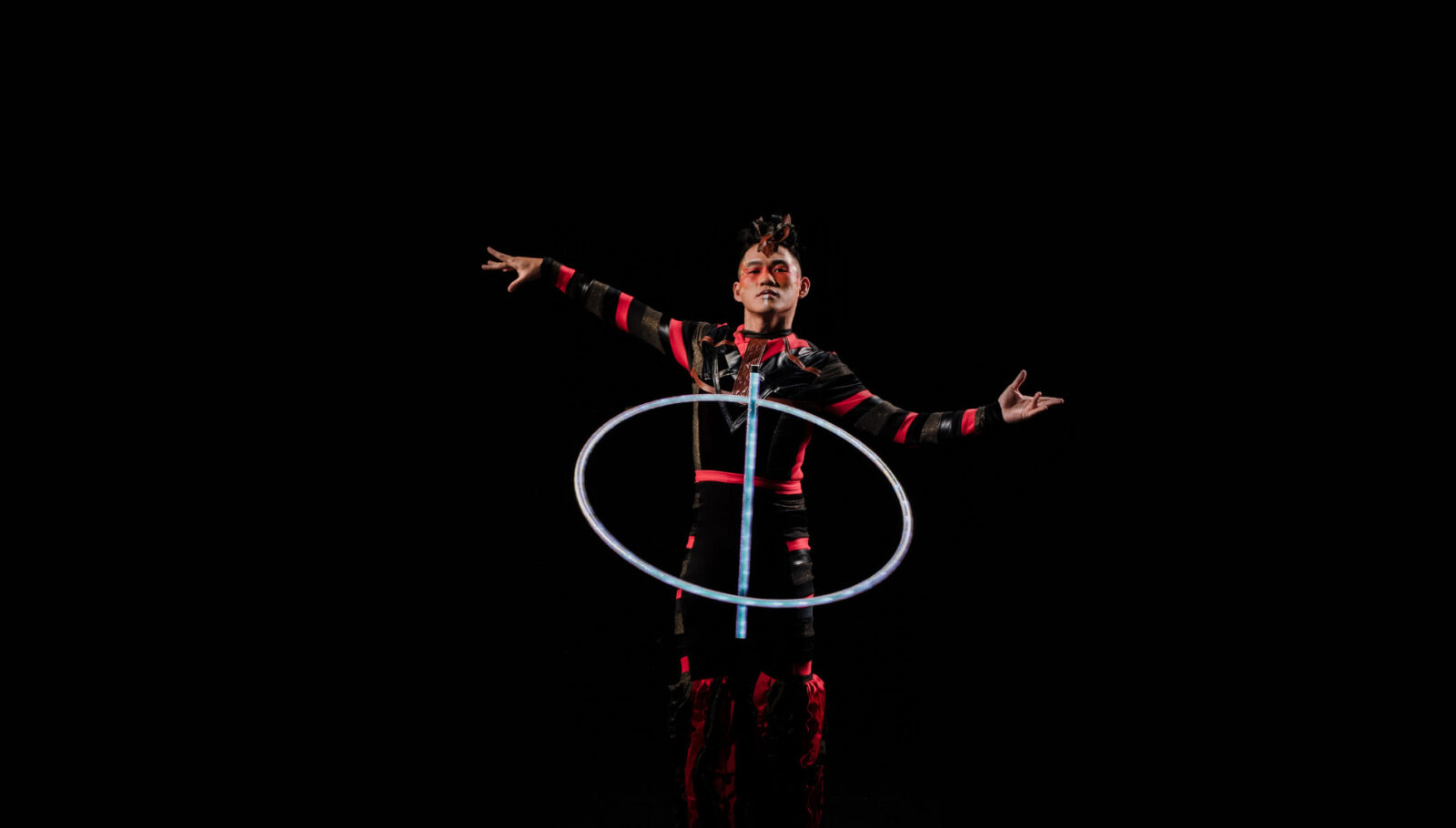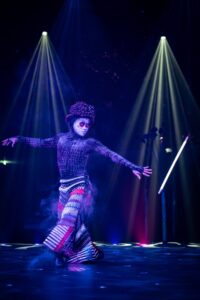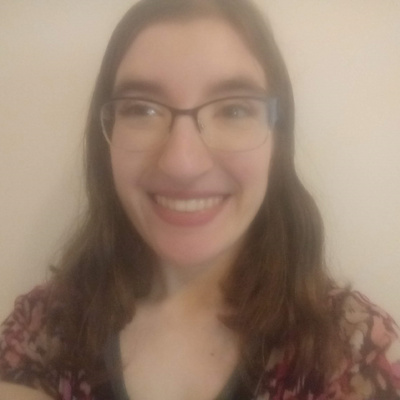From the Philippines to Vegas: Leviwand Pioneer Ehrlich Ocampo on Opening New Roads Into Circus

The circus world is a vast place, one which many performers reach by unconventional roads—and with very unique skills to offer. Championing both the discipline of leviwand and his fellow Filipino artists, the Wynn “Awakening” performer Ehrlich Ocampo reveals his vision for helping international talents find their paths onto the stage.
It was more than a decade ago back in his native Philippines that international performer Ehrlich “Firechill” Ocampo got his first taste of the movement arts by joining his high school’s cheerleading team. From there, it wasn’t long before he had fully caught the circus bug. Through independent practice and local “flow arts” groups, Ehrlich soon moved from gymnastics to poi spinning to discovering his love and passion in the newly formed practice of leviwand—an object manipulation discipline that integrates magic, dance, acrobatics, and technology through its namesake apparatus, a wand that can appear to float in the air around its wielder. The young performer’s dreams had been cut out for him… but such a newborn discipline, and his home country, both lacked the resources for young artists who dreamed of finding a career in circus to pursue one. So in the decade-plus since then, Ehrlich and his leviwand have forged their own pathway onto the global stage—all while working to lay the trail for other artists sure to follow.

Now after so much hard work, sweat, and outreach, Ehrlich has found his foothold as a circus artist, currently signed with the show “Awakening” at Wynn Las Vegas. He has firmly established his discipline and his status as a leviwand pioneer, whether by introducing the act to the circus world at the 2016 Festival Mondial du Cirque de Demain, premiering it on Cirque du Soleil’s stages inSyma (2019), or showcasing leviwand to global audiences in 2021 with his audition forAmerica’s Got Talent season 16, which went viral on YouTube with over 2.3 million views to date. He has invented many tricks for leviwand and used the tool to reinvent classic magic tricks, presenting them at industry-wide conferences full of magicians. He’s also built out the websiteLeviwand.Dance, an online resource for leviwand learners who hope to master some of these tricks themselves, and serves as a teacher for many such aspirants. And along the way, Ehrlich has used his growing platform to advocate for other Pinoy talents at home and abroad to gain all the support they need to emerge onto and flourish on the world stage.
We recently caught up with Ehrlich to learn more about his life and work: his championing of leviwand, and the changes he wants to see happen for Filipino artists.
CircusTalk (CT): We’d love to hear about your performance background and education. When and how did you become involved with the circus world?
Ehrlich Ocampo (EO): My performance background is an interesting and unusual mix. Unlike many others, I did not come from a circus or performing family, nor did I study at a circus school.
Back in the Philippines, I started out with cheerleading when I was in my junior year of high school. My friend who was the cheer captain said they needed more performers, and thus my journey with the movement arts began. We barely had any funding or equipment; we were trying to figure how to do gymnastics in the lobby of our high school. In our country, where schools have little budget for student activities and our group would get around PHP100.00 (USD $2.00) of allowance per day, a PHP500.00 (USD $10.00) session at the gymnastics center was almost out of reach for us.
After college, I was doing a web design project for a bar at Boracay Beach wherein my client wanted to highlight their “fire dancers,” who spun fire poi and danced to pop music as entertainment for the bar guests. I was curious and wanted to try it, and I eventually fell in love with poi spinning and started pursuing it as a hobby.

I found a “flow arts” academy and community in the Philippines which did poi spinning, but soon found myself feeling out of place, as I wanted to do more than spinning my props— I wanted to incorporate my dancing and my acrobatics, and create theatrical numbers with it. This is when I found a video of Srikanta Barefoot, a fire performer in the Cirque du Soleil show Zaia in Macau. He was doing all the jumps, kicks, turns, and acrobatics that I was exploring with my own poi spinning. Instead of feeling like an outcast in my local community, I had now found a place where I knew I would belong: the circus.
My dreams were set. In my mind, I needed to be like those circus performers. If I wanted to be on that stage, I needed to train harder and become better in my performances. Even with the scarcity of resources available in my country, I tried to learn, however, whenever, and wherever I could. I studied different videos of tutorials and performances, stretched and worked out in my room, and practiced on the streets at night when there was less traffic.
CT: What led you to pursue a career in circus?
EO: There was definitely a moment of awakening for me.
At the time when I was starting with poi spinning, I also did merchandising business back in the Philippines. It was the usual “have a steady income so you can do your hobby” situation. So to be able to afford props and training, I was prioritizing my business and putting my passion second. I knew I loved performing more, but my logical brain thought this was the safest path to be able to do it.
Things flipped when I was almost in an accident while riding a taxi. We almost hit a concrete barrier, which the driver did not see because of the dark street. I had to yell at him to stop! I had a breakdown after that, thinking: What if I had lost my legs in that accident? What if I’d become paralyzed? Then I could not have pursued my passion any longer. I realized then that I need to pursue my passion while I am still young and while my body can still do it. If the day comes when I can no longer perform, then it will be with no regret, as I did what I could when I could still do it.

So I transitioned from entrepreneur to professional performer, utilizing my business and marketing know-how to being an artist. On top of hard work and training, I knew I needed to put myself out there and show people my work, reach out to companies, and open myself up to opportunities. Eventually, after participating in festivals andsubmitting videos of my acts, demo/sizzle reels, promotional photos, and my CV to any and every company and casting agent that I could, recognition of my work slowly started bringing in job opportunities on the circus stage.
CT: How were you first introduced to the leviwand, and what was it about the discipline that drew you to it?
EO: I first encountered leviwand while ordering some LED pois from the website of a company called Flowtoys. I was exploring their website when I saw a product called the “flow-wand.” [On the product page,] there was a video of a woman—her name is Prisna Nuengsigkapian—gracefully dancing with a stick that seemingly floated around her. I was so mesmerized by this video that I just straight-up ordered one.
After that, during Philippine Flow Fest 2013, I met a leviwander named Iain Culp who shared some advanced techniques with me. This workshop opened up so many possibilities within my exploration of dancing with props. He then let me “flow” or freestyle with his fire wand at some point, and people saw the magic happening between me and the prop.

It was like finding a long-lost soulmate. Leviwand enabled me to express myself with every part of my body—even the tips of my fingers, which was uncommon in object manipulation. It was also the right balance between technique and artistry; a perfect mix for both the analytical and creative sides of my brain.
On top of that, it was suited to my unique circumstances at the time. Leviwand was still in its infancy, which meant the inaccessibility of resources such as circus instruction or coaching wasn’t a deterrent to my progress; I was just exploring it and coming up with new techniques. I was just enjoying my journey of being creative and seeing how to present this new and curious art to the audience. As well, it also didn’t need a special facility or specific rigging, which meant I just needed the space to practice, whether it be in the park, on the streets, or any other big enough space. I did tear holes through many pairs of shoes, though.
CT: You’ve been a key figure in bringing more exposure to the leviwand discipline, whether by performing it on AGT or building out its repertoire of tricks and teaching them to others. Describe for us one of your favorite tricks to perform. How did you develop it, and how would you go about teaching it to an aspiring performer?
EO: One of my favorite tricks to perform is definitely doing an aerial cartwheel while the leviwand is floating around me. It’s very magical—visually and technically impressive, looking as though both the human and the prop can defy gravity. Developing that specific move came to me progressively, and I found a few ways that didn’t work before I came up with the one that did.
By working through my process and starting to teach it to others, I have found a methodology, which I’ve applied to myself and my students. That’s how I continue coming up with new and more creative techniques with my leviwand, although I’ve found this methodology ishelpful in any discipline.

First, I want the practitioner (this could be me or someone else) to LEARN—learn the mechanics of the move, the base technique and what it should feel like in practice, how to spin the wand, where things go and where everything lands. As an instructor, this is where I can troubleshoot and spot problems for my students so they can perform the proper technique. Then they can DRILL it to the ground, where they just practice it to the point of consistency and comfortability.
After that is the most interesting step, which is to BEAUTIFY the act. I want the practitioner to see how they can improve their trick artistically: straighten their legs, add some flair with their arms, ease the transition in and out of it, and even pay attention to their gaze. This is a personal touch, one in which I guide every practitioner individually, as different artists have different styles and flavors.
The last step is to IMPROVE. I always ask this of myself in my personal practice. The aerial cartwheel trick with my leviwand just came from asking questions like, “What if I did this next?” or, “What if I leveled it up with this?”. The trick started out with an illusion turn, then a basic cartwheel, and then eventually an aerial cartwheel. I have since also added more successive cartwheels and am now working for successive aerial cartwheels with the leviwand as well. I am interested to see what can be explored next, whether by me or by the next generation.
CT: What is the performing arts landscape like in the Philippines? How do Filipino artists find their careers?
EO: The performing arts landscape in the Philippines is diverse and vibrant. Like most other countries, we have various art forms such as theater, dance, music, and traditional Filipino performing arts. In terms of circus, we are slowly building the community with a lot of object manipulation as it requires no facilities, and there are some pole and aerial houses as well.

As someone who used to be a local artist in the Philippines, I would say establishing a sustainable professional performing career there is definitely a challenge. There are a few popular artists who have definitely found success artistically and economically, but in general, the opportunites are not too often or the projects are low-budget. I saw a lot of young artists passionately pursuing their passion but struggling to sustain it, only to give it up in the end due to the economic factors. Other artists are only able to pursue the arts while also having other means to earn an income.
Most Filipino artists find success outside of the country, where employers often can pay more compared to our local employers (mainly due to cost of living and currency differences). However, the legal requirements become inhibiting factors to many performers aspiring to perform abroad. There was a time when I had to jump through the hoops of medical examinations, trainings, and certifications, as well as visa applications just to get a job, as opposed to my Western counterparts, whose passports were often enough.
CT: Alongside your performance work, you are a major advocate for Pinoy artists both within the Philippines and on the world stage. Why is it so important to advocate for Filipino artists? What do you want to see happen for them in terms of opportunities, representation, visibility, etc?
EO: Filipinos are a talented people, and not just in singing which we are more known for.

On top of the economic challenges, scarcity of resources, and lack of governmental support, there is the mental obstacle that even I’ll admit I battle to this day. We have a “colonial mentality” in which we, as a people, tend to believe that our ethnic or cultural identity is inferior. This seeps into our own confidence as artists and performers, thinking we can never measure up to the rest of the world. It took me a long time to believe in my own abilities as well, to finally say that “I am good at my art.”
I’ve worked with local and international artists in cruise ships, festivals, and on the Vegas stage, and I can say we Filipinos can be as good as other nationalities. I see the raw talent and potential in our country—we are actually filled with it. And I believe that, when we have more resources such as facilities, instruction, opportunities, and support, we can develop a lot of great talents. I advocate for this so my fellow Filipinos can see it, too, and believe in themselves and invest in our own talents.
Aside from being recognized and visible in the international scene as performance artists, I hope the Philippines will become an entertainment hub in itself since there are so many talented people there—not just in circus, but also in music, theater, and dance. I hope one day Filipino performers need not be away from their families to pursue successful careers.
CT: What has been your proudest moment as a performer so far?
EO: There are two moments which I want to share.

Aside from the notable achievement of being chosen to participate in the Festival Mondial du Cirque de Demain in Paris, I am proud of that part of my life because it was so outside of my comfort zone. I didn’t do any formal training in leviwand, nor did I have proper circus experience; I didn’t feel ready. Other participants had had years of performing experience, came from circus schools, and had coaches and huge technical setups—compared to me, who was just one guy with barely a costume and a stick. I definitely felt anxious, but at the same time, my mission to share my art helped me push through, and the experience definitely helped me grow as a circus artist.
Another moment was when I was working for Cirque du Soleil at Sea on board the MSC Bellissima. There was a part in my act where I came up close to the audience and spun my LED leviwand near the front row. In one of the shows, there was a child with special needs with his eyes and mouth wide open in awe. He was so mesmerized. That moment really touched me, and it makes me proud to think of the effect we have on people by what we do.
CT: Any exciting projects you’re working on right now?
EO: I am currently in the newest, most technologically advanced show on the Vegas strip: “Awakening” at the Wynn Las Vegas. We are excited to be back starting on June 30th with new choreography, costumes, and characters. You can visit the show’s website and our socials (@awakening.wynn) for additional information.
On top of that, I am always working on creating new things, whether that’s new techniques or a new creative presentation of an act. You can keep updated on my socials (@firechill.ph) or my website.
Press image from "Awakening" shared with us by Sara Lambley. All others shared by Ehrlich Ocampo. All image rights to the respective photographers.
Editor's Note: At StageLync, an international platform for the performing arts, we celebrate the diversity of our writers' backgrounds. We recognize and support their choice to use either American or British English in their articles, respecting their individual preferences and origins. This policy allows us to embrace a wide range of linguistic expressions, enriching our content and reflecting the global nature of our community.
🎧 Join us on the StageLync Podcast for inspiring stories from the world of performing arts! Tune in to hear from the creative minds who bring magic to life, both onstage and behind the scenes. 🎙️ 👉 Listen now!
